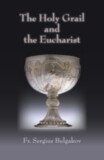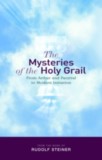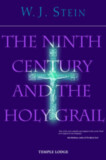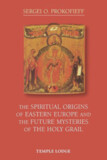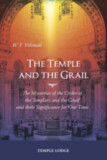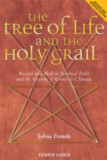The Holy Grail
The Quest for the Renewal of the Mysteries
- Publisher
Rudolf Steiner Press - Published
20th February 2002 - ISBN 9781855840744
- Language English
- Pages 94 pp.
- Size 4.72" x 6.7"
Through philosophical and scientific training, Rudolf Steiner brought systematic discipline to the field of spiritual research, with fully conscious methods and comprehensive results. A natural seer, he cultivated his spiritual vision to a high degree, enabling him to speak with authority on previously veiled mysteries.
Samples of his work are contained in this book, with edited excerpts from Steiner’s talks and writings on the Holy Grail.
Topics: From the Mysteries to Christianity; Death and Resurrection in Ancient Egypt – the Miracle of Initiation; The Mystery of Golgotha; The Mystery of the Higher Ego – the Holy Grail; The Grail and the Spiritual Evolution of Humanity; The Gnostic Crisis and the Loss of the Mysteries; Stages of Evolution – Archaic Clairvoyance; The Role of the Mysteries; The Secret of Evolution – the Holy Grail.
C O N T E N T S:
Introduction by Andrew J. Welburn
Part One: The Essence of Christianity from the Ancient Mysteries to the Holy Grail
1. First Meditation: From the Mysteries to Christianity
2. Second Meditation: The Grail and the Spiritual Evolution of Humanity
Part Two: The Hidden Stream
1. Mystery Streams in the Legends of the Grail
2. The Grail among the Stars: A Personal Quest
Sources
Suggested Further Reading
Note Regarding Rudolf Steiner’s Lectures
Rudolf Steiner
Rudolf Steiner (b. Rudolf Joseph Lorenz Steiner, 1861–1925) was born in the small village of Kraljevec, Austro-Hungarian Empire (now in Croatia), where he grew up. As a young man, he lived in Weimar and Berlin, where he became a well-published scientific, literary, and philosophical scholar, known especially for his work with Goethe’s scientific writings. Steiner termed his spiritual philosophy anthroposophy, meaning “wisdom of the human being.” As an exceptionally developed seer, he based his work on direct knowledge and perception of spiritual dimensions. He initiated a modern, universal “spiritual science” that is accessible to anyone willing to exercise clear and unbiased thinking. From his spiritual investigations, Steiner provided suggestions for the renewal of numerous activities, including education (general and for special needs), agriculture, medicine, economics, architecture, science, philosophy, Christianity, and the arts. There are currently thousands of schools, clinics, farms, and initiatives in other fields that involve practical work based on the principles Steiner developed. His many published works feature his research into the spiritual nature of human beings, the evolution of the world and humanity, and methods for personal development. He wrote some thirty books and delivered more than six thousand lectures throughout much of Europe. In 1924, Steiner founded the General Anthroposophical Society, which today has branches around the world.



